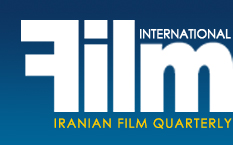|
Review of a significant trend in war movies
Spirit Stroke
by Ferry Shafaghi
|
The focus of nearly all early war movies, particularly those on the World War 2, was on war itself. The theme of these movies was typically partisanship, heroism and, finally, the joy of triumph. Attractive elements of thrill and entertainment were also injected to these films with time bombs, prison break and humor. Facing such fictitious situations and characters, we were not only ignoring the harsh reality of war, but also enjoyed violent and unrealistic confrontations. This genre was revolutionized years later by a new trend which focused more on terrifying consequences of war. In these new films, without taking sides, war was only used as a medium to portray its devastating psychological impact on human mind. These films demonstrated how war destroyed middle-class and poor families and put people’s spirits on fire. There are countless examples of such outstanding films in the American and world cinemas, particularly those based on the Vietnam War, but what immediately comes to mind is Coming Home of Hal Ashby, The Deer Hunter of Michael Cimino, Killing Fields of Roland Joffe and Stanley Kubrick’s Full Metal Jacket, which revealed true and ugly face of war. There are so many other examples of war films, which have impressively showcased this pivotal trend to the point that a clear distinction of what is regarded as war movie was blurred. For instance, could Danis Tanvic’s masterpiece, No Man’s Land, which basically lacks any traditional characteristics of this genre, be considered a war movie? In order to make it simpler, it might be better to call these films “anti-war movies”
Following occupation of Iraq and Afghanistan by foreign forces, American Cinema has produced many remarkable films on overwhelming consequences of war but I have seen three notable films this year with a fresh and creative view of the subject. Among those three films, Lebanon (Samuel Maoz), which has won a Golden Lion from Venice Film Festival, received the attention it deserved. The Hurt Locker, winner of an Oscar for the best picture, got more than it was worthy of and, unfortunately, Jim Sheridan’s brilliant film, Brothers, was completely ignored. The Hurt Locker, which lacked the familiar ingredients of Oscar standards, shockingly surpassed “Oscar-written-all-over-it” Avatar and won the award for the best picture. In spite of many flaws in the script, the outstanding direction cannot be overlooked. The key point in evaluation of such films is whether characters and situations have been created with full knowledge of real circumstances or they are just made up in filmmaker’s mind. Maybe it is not for us to judge authenticity of the film as we have not experienced the incidents firsthand. But there are scenes in the movie that, regardless of the degree of our familiarity with such events, will trigger sensors of believability in our mind. In spite of its powerful tense moments and outstanding cinematography, the film has many flaws in the script. Here, William James replaces a bomb squad unit specialist who has been killed during one of his perilous missions. Although he is a very skillful bomb expert, he should naturally be nervous and terrified while he acts as cool as if he is in a computer game. The courage and expertise he demonstrates during every bomb defusing mission results in a self-satisfaction that eventually culminates in a sense on invincibility.
SUBSCRIBE
[Page: 76]
|
|
|
|
|
President & Publisher
Massoud Mehrabi
Editors:
Sohrab Soori
Translators:
Sohrab Soori
Behrouz Tourani
Zohreh Khatibi
Contributors
Saeed Ghotbizadeh
Mehrzad Danesh
Advertisements
Mohammad Mohammadian
Art Director
Babak Kassiri
Ad Designers
Amir Kheirandish
Hossein Kheirandish
Cover Design
Alireza Amakchi
Correspondents
E.Emrani & M. Behraznia (Germany)
Mohammad Haghighat (France)
A. Movahed & M. Amini (Italy)
Robert Richter (Switzerland)
F. Shafaghi (Canada)
B. Pakzad (UAE)
H. Rasti (Japan)
Print Supervisors
Shad-Rang
Noghreh-Abi
Gol-Naghsh
Subscription & Advertising Sales
Address: 10, Sam St., Hafez Ave., TEHRAN, IRAN
Phone: +98 21 66722444
Fax: +98 21 66718871
info@film-magazine.com
Copyright: Film International
© All rights reserved,
2023, Film International
Quarterly Magazine (ISSN 1021-6510)
Editorial Office: 5th Floor, No. 12
Sam St., Hafez Ave., Tehran 11389, Iran
Printed in Tehran
Publishing Date Spring 2010
*
All articles represent views of their
authors and not necessarily
those of the editors
|
|
|

